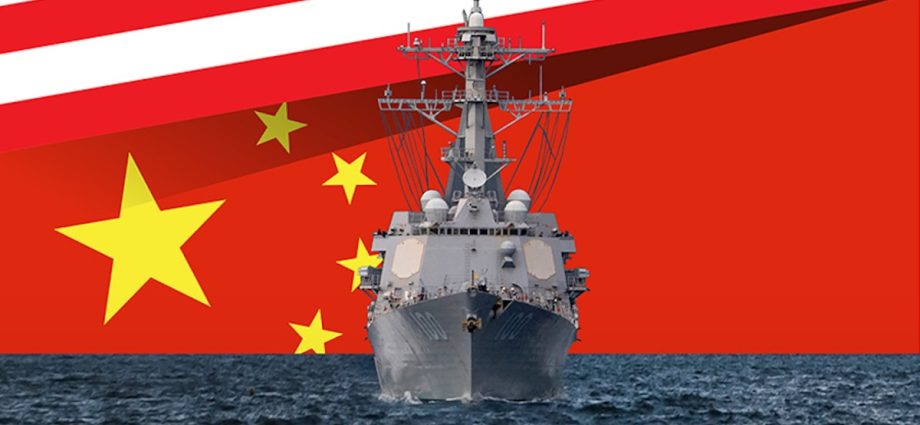
At a recent meeting of the four members of the Quadrilateral Security Dialogue in Hiroshima, namely the United States, Japan, India, and Australia, leaders outlined a series of critical issue areas that continue to impact stability in the Indo-Pacific region.
These included the vulnerability of undersea Internet cables, the protection of vital sea lines of communication (SLOCs), and the broader preservation of a rules-based international order.
As the Group of Seven has provided the world’s richest countries the opportunity to talk tough on “economic coercion” on the part of China, so too should the Quad send an equally strong message about China’s territorial and maritime ambitions. To do that, it must get its house in order.
First, criticisms linger about the utility of the Quad’s informal arrangement and lack of strategic direction. It has no budget, nor do any formal codes of conduct or treaties guide its conduct.
Institutionalization of the Quad seems unlikely. Many suggest it is so informal that it appears to be just talk, rather than a credible, assertive security organization. Some have even suggested that the Quad’s informal ambitions would never be fully realized.
Most of these critiques are old and fail to chart the progress it has made in becoming a firm security anchor in the region, evidenced by China’s increased wariness and alarm about its long-term presence that ultimately threatens Beijing’s geopolitical ambitions.
The Quad must work to change perceptions among countries in the Indo-Pacific region about its intentions, without raising alarms. For example, while many Southeast Asian countries have viewed the Quad with considerable suspicion and worry, that is no longer the case.
A recent survey by the ISEAS Yusof Ishak Institute found that 50% of Southeast Asian experts believed an enhanced Quad presence would be “constructive for the region,” while only 12% disagreed. Vietnam’s elevation to ”Quad Plus” status is indicative of a more receptive and agreeable Southeast Asia.
However, this must mean that the grouping cannot just be seen as an informal security organization, but a robust regional framework for cooperation within the wider Indo-Pacific region that includes not only new focus areas such as health and pandemic response, but the expansion of bread-and-butter areas such climate-change adaptation and mitigation, capacity-building, and security infrastructure development, particularly in the area of cybersecurity.
That does not mean security should be on the back burner. The challenge for the Quad is to find the right balance, where there is an awareness of Chinese aggression, but intelligent enough not to be provoked into missteps.
Comparable to what the Joint Statement of the Security Consultative Committee (“2+2”) between Japan and the US suggested, the Quad should work “to advance bilateral modernization initiatives to build a more capable, integrated, and agile alliance that bolsters deterrence and addresses evolving regional and global security challenges.”
ASEAN role crucial
Still, other challenges remain. The preservation of ASEAN (Association of Southeast Asian Nations) centrality is crucial to many of its member states, and is at the heart of the ASEAN Outlook on the Indo-Pacific (AOIP).
There are lingering concerns about the polarizing effects that US-China regional competition would bring and that consequently, they would be drawn deeper into great-power politics. Yet that does not preclude ASEAN states from developing significant partnerships with regional middle powers, such as Japan, India, Australia, or even Canada.
Quad countries should take advantage of some of this hegemonic rivalry to work with regional middle-income or small states to develop stronger bilateral relations. This is evident in Thailand’s nascent security partnership with Japan or its rapidly developing security and counterterrorism partnership with India.
There is some evidence that positive impressions among Indo-Pacific countries and Quad intentions toward regional partners are growing.
The Quad has been able to highlight its focus beyond rigid power politics to providing regional public goods, but it has also endeavored to incorporate crucial issue areas that resonate quite profoundly among ASEAN countries – and what was previously deemed a weakness, its informality, has contributed to its success.
The flexible design of the Quad reflects its members’ proactive understanding of the Indo-Pacific, a dynamic region that comprises countries of varied interests that share a common concern for formal military alliances.
To overcome the regional anxieties that have come with China’s ascent and geo-strategic posturing, the Quad must evolve. For some countries in the Indo-Pacific region, increased security posture by Quad countries is a liability, while for others it is a welcome relief.
Beijing’s attempts to dominate or accelerate its sphere of influence from the Indian Ocean to the waters of the Pacific have been met with mixed results, but where resistance has developed, it has come from both security and economic alternatives. For the Quad to be both of those things, it must act fast.

